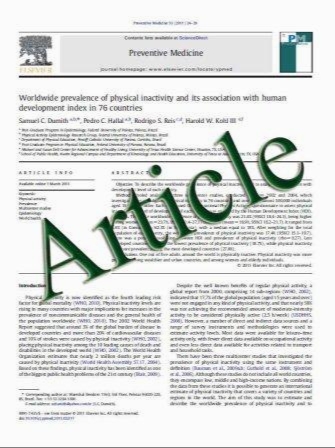24-h pH-metry and Multichannel Intraluminal Impedance Monitoring in Obese Patients with and without Gastroesophageal Reflux Disease Symptoms
- نوع فایل : کتاب
- زبان : انگلیسی
- مؤلف : Giorgio Ricci & Calogero Amella & Edoardo Forti & Angelo Rossi & Gianluca Bersani & Silvia Dari & Veronica Pasini & Antonella Maimone & Vittorio Alv
- چاپ و سال / کشور: 2010
Description
Background The 24-h ambulatory pH-metry with multichannel intraluminal impedance monitoring (24-h pHmetry+ MII) allows the simultaneous assessment of chemical and physical properties of esophageal refluxes and the detection of its proximal migration. Methods Gastroesophageal reflux (GER) was investigated in obese symptomatic (obese gastroesophageal reflux disease, GERD) and asymptomatic (obese non-GERD) patients. The data were compared with those obtained from non-obese GERD patients and a control group. Thirty-five (20 non- GERD, 15 GERD) obese patients and 15 non-obese GERD were investigated with 24-h pH-metry+MII. Ten normal weight subjects with normal 24-h pH-metry+MII were used as control group. Results The percent time acid exposure was significantly higher in obese non-GERD than controls (p=0.007). Acid reflux episodes were increased vs. controls in obese non- GERD (p=0.005) and obese GERD (p=0.034). Upright position showed a significant increase of reflux episodes in non-obese GERD (p=0.034) and in obese non-GERD (p=0.027) vs. controls. Recumbent position showed reflux episodes significantly increased vs. controls in obese non- GERD (p=0.002), obese GERD (p=0.021), and non-obese GERD (p=0.033). In obese non-GERD, waist circumference (WC) correlated negatively with upright position episodes (r=−0.53; p=0.043) and with proximal migration episodes, i.e., total (r=−0.60; p=0.018), acid (r=−0.55; p=0.033), and weakly acidic refluxes (r=−0.56; p=0.031). Conclusions Obese patients showed an increased number of refluxes with acid content. Refluxes with proximal extent were significantly higher in obese non-GERD than in controls and non-obese GERD patients. No difference was observed between the two obese patient groups. In asymptomatic obese patients, the WC correlated with proximal extent episodes.
OBES SURG (2011) 21:48–53 DOI 10.1007/s11695-010-0275-z Published online: 12 September 2010


